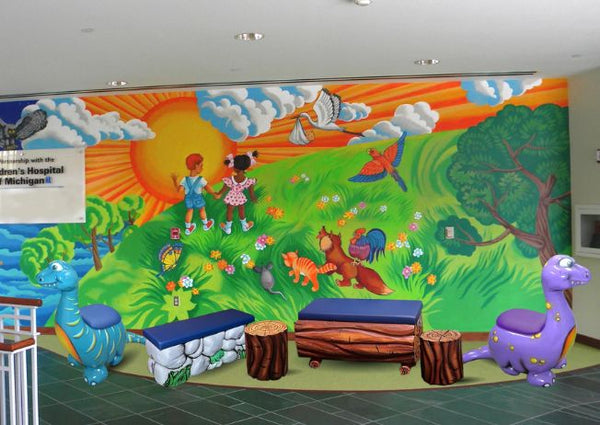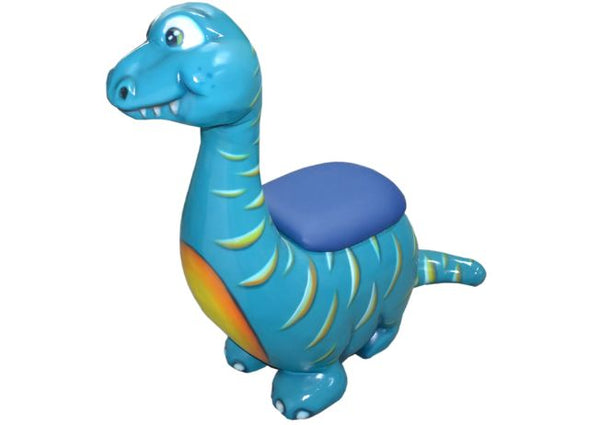Creating Engaging Pediatric Waiting Rooms Kids Love

Pediatric waiting rooms play an important role in shaping a child's healthcare experience. The right furniture choices, including comfortable waiting room chairs for doctors office, can transform a clinical space into a welcoming environment that helps children feel safe and relaxed before appointments.
So that children feel safe and relaxed before their appointments. This article explores tips for designing pediatric waiting rooms that meet both patient and practice needs.
Why Pediatric Waiting Room Design Matters
Thoughtfully decorated with environment packs, the kid-centric reception area welcomes families. This helps ease anxieties children often associate with doctor visits. Child patients feel more secure and cooperative in environments made specifically for them.
Practices that invest in pediatric waiting room furniture designed around safety, cleanability, and comfort. This makes it easier for those practices to build patient loyalty and trust.

Selecting the Right Pediatric Waiting Room Furniture
The furniture selected for a pediatric waiting area impacts functionality and ambiance. Consider options suiting various developmental stages. Match furniture scale and design to children’s bodies for maximum comfort.
Infant Furnishings
Provide infant stations allowing babies to rest comfortably. Upholstered nursing chairs with secure harness straps keep squirmy babies safe while feeding. Designate floor spaces with wipeable foam mats for tummy time or crawling practice. Include storage cubbies to stow diaper bags and extra blankets.
Toddler and Preschooler Spaces
Active toddlers and preschoolers need room to move. Open areas allow free play. Help define spaces and contain messes with colorful modular blocks sporting wipeable surfaces. These also work well displaying toys and books. Gather blocks in clusters to craft age-specific activity zones.
Grade School Kids and Teens
Older kids need furnishings supporting continued development. Provide a variety of seating options scaled for growing bodies – gliders, beanbags, booth benches. Sturdy wood chairs sized for adults allow accompanying parents to sit alongside children during appointments.
All Ages
Multipurpose furnishings work for children of any age. Timeless wood frame chairs upholstered in stain-resistant fabrics blend into both contemporary and traditional décors. Rectangle coffee tables with rounded corners anchor seating areas. Durable plastic bins hold books, toys and activities to engage kids of varying attention spans.
Creating Defined Zones Within Open Floor Plans
Installing modular furniture helps segment open floor plans lacking full walls. These visually define discrete spaces while maintaining sightlines for easy supervision.
Arrange components to establish quiet reading corners, play areas for releasing energy, and comfortable places for parents to connect between appointments.

Reading Nooks
Let bookworms snuggle up in cozy reading nooks. Position waiting room chairs or padded bench seats beside literature-filled shelving units. Angling components create a secluded feel while keeping kids visible. Attach canopy panels to existing walls or vertical dividers for further enclosure.

Play Zones
Provide ample room for play zones keeping kids occupied. Scatter developmentally-appropriate toys, games, and instruments around activity tables or the floor. Place rocking toys, push-pull contraptions, and oversized building blocks nearby for gross motor skill development. Use vibrant colors denoting different age groupings.
Waiting Areas
Arranging matching chairs and sofas creates adult waiting areas for parents. Cluster soft seating and end tables to encourage community and conversations. Position tables near electrical outlets so parents and older kids (with supervision) can charge devices between appointments.
Prioritizing Safety
Child safety takes precedence selecting pediatric medical equipment. Analyze space and furnishings through kids’ eyes to pinpoint potential hazards.
Accident Prevention
Look for furnishings with rounded edges. Choose pediatric tables with smooth surfaces over intricate ornate carvings prone to snagging skin or clothing. Select seamless pediatric waiting room chairs, sofas with concealed contours eliminating crevices where small fingers get caught.
Tip-Over Risk Reduction
Free standing shelving units, wardrobes and drawers require anchors fastening them to walls securely. Seek out bookcases and storage cabinets with anti-tip safety features like metal brackets or weighted bases preventing accidental tipping during climbing.
Choking Hazards
Ensure toys provided have age ratings matching patients treated. Confirm soft elements like plush doll stuffing, eyes, buttons and small parts pass safety inspections. Disinfect hard plastic toys regularly. Check toy bins often for damaged pieces needing immediate removal.
Wall Mounted Components
Properly mounting fixtures directly into wall studs or using hollow drywall anchors supports weight safely. Conduct thorough safety reviews ensuring waiting room murals, artwork, pegboards and shelves won’t collapse if pulled on or climbed.
Final Recommendations
Prioritizing infection control, safety and ease of maintenance ensures furnishings provide long-lasting value. Seek furniture passing healthcare standards for cleanability, durability and construction integrity.
While specialty medical furniture costs more upfront. Its superior construction pays off over years through flawless performance, reducing replacement costs.
Invest wisely in pediatric waiting room furniture. Pediatric waiting rooms become cherished spaces families enjoy returning to. This supports better patient outcomes by reducing anxieties.
